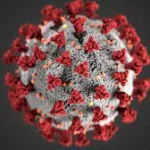A 1,000-Fold Leap in Brillouin Microscopy Expands Life Scientists’ Toolbox
Researchers at the European Molecular Biology Laboratory (EMBL) have made a significant breakthrough in microscopy technology, enhancing the capabilities of life scientists worldwide. Their novel methodology has resulted in a remarkable 1,000-fold improvement in speed and throughput in Brillouin microscopy, providing an efficient way to observe light-sensitive biological samples.
“We were on a quest to speed up image acquisition,” said Carlo Bevilacqua, lead author of a study published in Nature Photonics and an optical engineer in EMBL’s Prevedel Team. “Over the years, we have progressed from seeing just a single pixel at a time to a line of 100 pixels, and now to a full plane offering a view of approximately 10,000 pixels.”
A Century-Old Phenomenon with Modern Applications
Brillouin microscopy is rooted in a phenomenon first predicted in 1922 by French physicist Léon Brillouin. He discovered that when light interacts with a material, it exchanges energy with naturally occurring thermal vibrations, causing a minute shift in the light’s frequency. By measuring these shifts, scientists can infer important mechanical properties of biological samples.
While Brillouin scattering was first harnessed for microscopy in the early 2000s, initial applications were hindered by slow processing speeds, limiting researchers to viewing only one pixel at a time. This made studying biological samples an arduous and time-consuming task.
A New Era in Imaging Speed and Precision
The latest development from Bevilacqua and the Prevedel group has transformed the imaging process. After successfully expanding the field of view to a full line in 2022, they have now achieved a full 2D plane, vastly accelerating data collection and facilitating 3D imaging.
“Just as the development of light-sheet microscopy at EMBL revolutionized light microscopy by allowing for faster, high-resolution, and minimally phototoxic imaging, this advancement in Brillouin imaging represents another major step forward,” said Robert Prevedel, Group Leader and senior author of the study. “With minimal light intensity requirements, we hope this new technology will open yet another window for life scientists’ exploration.”
This breakthrough is expected to make Brillouin microscopy more accessible and practical for various biological and medical applications, paving the way for new discoveries in cellular mechanics and disease research.
Disclaimer:
This article is based on materials provided by the European Molecular Biology Laboratory (EMBL). Content has been adapted for clarity and length. The original study, Full-field Brillouin microscopy based on an imaging Fourier-transform spectrometer, is published in Nature Photonics (2025), DOI: 10.1038/s41566-025-01619-y.











